How much science would a corrupt scientist corrupt
If a corrupt scientist could corrupt science?
“These people are not scientists. They are public-relations people who happen to have degrees in science. These are people who make their living producing results that their clients want. And that’s not science.” – Stanton Glantz, director of the Center for Tobacco Control Research and Education[1]
Mother Goose once asked:
“How much wood
Would a woodchuck chuck
If a woodchuck would chuck wood?”
We have some idea . . . New York state wildlife expert Richard Thomas found that a woodchuck could (and does) chuck around 35 cubic feet of dirt in the course of digging a burrow. Thomas reasoned that if a woodchuck could chuck wood, he would chuck an amount equivalent to the weight of the dirt, or 700 pounds.[2]
The World Economic Forum reports that humanity is on the brink of the 4th Industrial Revolution. [3] Hidden from view is both an emerging toxin and the question – How much further can tobacco science and corporate-governmental-industrial greed go?
How much science would a corrupt scientist corrupt if a corrupt scientist could corrupt science? It turns out, a lot.
It’s Called Tobacco Science for a Reason; It Causes Harm, and Someone Lies About It for Money in Order to Protect Profits, Not People
The urban slang dictionary descries tobacco science as:
“Science” done on behalf of an interest defending it’s cash cow from overwhelming credible science that shows it is harmful or detrimental to public benefit in some way.
Science conducted by a cigarette company showing that cigarettes are safe would be “tobacco science”.[4]
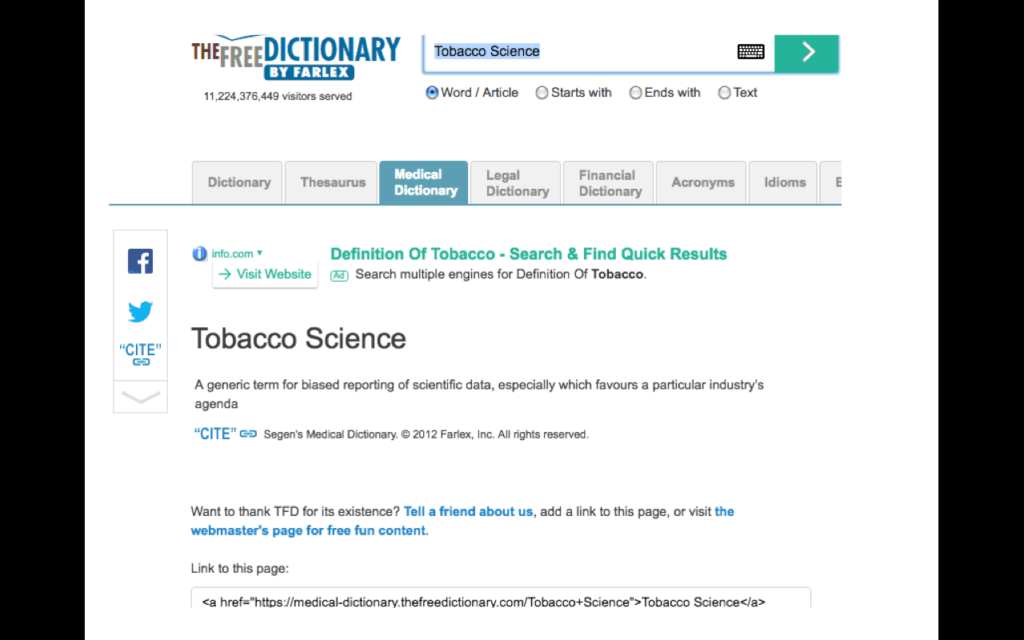 The University of California San Francisco Library and Center of Knowledge Management maintains a tobacco archive of 14 million documents created by tobacco companies about their advertising, manufacturing, marketing, scientific research and political activities.[5] The history of tobacco science has also been chronicled in a number of books, including
The University of California San Francisco Library and Center of Knowledge Management maintains a tobacco archive of 14 million documents created by tobacco companies about their advertising, manufacturing, marketing, scientific research and political activities.[5] The history of tobacco science has also been chronicled in a number of books, including
- Doubt is Their Product by David Michaels, [6]
- Merchants of Doubt by Naomi Oreskes and Erik Conway,[7]
- The Cigarette Century by Alan Brand. [8]
Public relations and marketing firms once hired mercenary experts to spin the science concerning products suspected of causing harm. Then, the scientists themselves realized that they did not need the public relations firms, and the lucrative and unregulated product defense industry was born. [9] Mercenary scientists often claim expertise in a multitude of specialties, and one way that is accomplished is by packaging the science as “human risk assessment” which is a way of discounting documented harm. [10]
One such product defense firm is Gradient, and one such scientist is Peter Valberg.
Tobacco Science for the Chemical Industry
For example, when 23 brain-tumor deaths were reported at a Chemical Plant in Texas, it was the largest cluster of work-related brain tumors ever reported. Valberg of the product defense firm Gradient testified for Dow Chemical.
He wrote that the families in McCullom Lake were citing early studies linking vinyl chloride to brain cancer but failed to cite more recent reviews. “These in-depth summaries and updates of worker cohorts do not support a causal link between VC exposure and brain cancer,” Valberg wrote.[11]
The Center for Public Integrity wrote:
… the company counted only one of the 23 brain-tumor deaths in Texas City.
The Center’s investigation found that because of the way industry officials designed the study, it left out workers known to have been exposed to vinyl chloride, including some who had died of brain tumors. Excluding even a few deaths caused by a rare disease can dramatically change the results of a study.’ [12]
Investigation of the vinyl chloride debacle was conduced by the Center for Public Integrity as part of a series entitled Science For Sale.
Science and opinion have become increasingly conflated, in large part because of corporate influence. As we explain in “Science for Sale,” an investigative series by the Center for Public Integrity and co-published with Vice.com, industry-backed research has exploded — often with the aim of obscuring the truth — as government-funded science dwindles.[13]
Tobacco Science for Tobacco
The series highlighted the incredulous story of Peter Valberg’s attempt to defend the asbestos industry for the development of mesothelioma by shifting scrutiny to the tobacco industry, despite the fact that Peter Valberg is a tobacco scientist working for Phillips Morris cigarettes. [14]
Gradient belongs to a breed of scientific consulting firms that defends the products of its corporate clients beyond credulity, even exhaustively studied substances whose dangers are not in doubt, such as asbestos, lead and arsenic.
Gradient’s scientists rarely acknowledge that a chemical poses a serious public health risk. The Center for Public Integrity analyzed 149 scientific articles and letters published by the firm’s most prolific principal scientists. Ninety-eight percent of the time, they found that the substance in question was harmless at levels to which people are typically exposed.
“They truly are the epitome of rented white coats,” said Bruce Lanphear, a Simon Fraser University professor whose own research showing that even tiny amounts of lead could harm children has been called into question by Gradient scientists. A panel of experts convened by the Centers for Disease Control and Prevention concluded in 2012 that there is no reliable evidence for a safe level of lead.
Tobacco Science for the Fossil Fuel Industry
As the fossil fuel industry comes increasingly under fire for causing damage to health and the environment, Peter Valberg again provides his expertise as an expert inhalant toxicologist. He was on retainer for We Energies to defend against liability for health damages from coal dust in Racine County, Wisconsin
WE ENERGIES CONSIDERS MORE AIR MONITORING AFTER COAL DUST FOUND
Referring to Dr. Peter Valberg, of Gradient, Schulze told the Racine County Eye that We Energies’ attorneys have him on retainer.
Racine County Eye learned that of the 34 families (some have multiple family members) that have health issues, 30 people in the group either have or died of cancer. Over 20 people reported having asthma and a handful of people have atrial fibrillation, chronic sinusitis, bronchitis, COPD, pneumonia, Crohn’s Disease, brain aneurysms, stomach and heart issues. All of those diseases are associated with coal dust exposure, according to Physicians for Social Responsibility.[15]
We Energies subsequently purchased the homes in Racine Country that were polluted with coal dust, forcing the owners to sign a confidentiality agreement, and continuing to deny a link between coal dust exposure and health issues.
WE ENERGIES BUYS FIRST HOME FROM MEDIATION GROUP FOR $350,000
Neighbors Claim Health Problems, We Energies Denies Them
The couple and their family have had a myriad of health problems over the years. But We Energies has denied that there is a correlation between the Hupp’s health and the rest of the mediation group’s claims, and the proximity to the We Energies Oak Creek Power Plant.
“As we have said before, no link has been established between our operations at the Oak Creek Power Plant and health issues raised by some area residents,” said Brian Manthey, spokesperson for We Energies.
But the EPA concluded in 2009 that fine particle pollution does pose serious health threats, including early death from short-term and long-term exposure, cardiovascular harm, respiratory harm, may cause cancer, and may cause reproductive and developmental harm. The Hupp family lives close to an air monitoring station that has registered fine particle pollution, even though those levels are within the EPA’s National Ambient Air Quality Standards.
Racine County Eye reached out to the Hupp family, but they did not want to comment on the transaction. In the real estate transactions made between the utility and all of the neighbors that sold their homes independent of the mediation, We Energies has required them to sign confidentiality agreements barring them from discussing the transaction and not to sue the utility for health issues in return for cash for moving.
Despite finding coal dust in Hupp’s house, We Energies officials maintain that the real estate transactions have nothing to do with their health issues.
The utility has consistently quoted Dr. Peter Valberg, an air quality expert from Gradient Technology, who has supported We Energies stance that the plant isn’t making people sick. Still, Valberg’s work has been criticized as a “Rented White Coat” that “rarely acknowledges that a chemical poses a serious public health risk,” according to a story by the Center for Public Integrity,[16]
 Tobacco Science for Green Clean Energy Climate Change Activists
Tobacco Science for Green Clean Energy Climate Change Activists
As society has increasingly approached consensus on the health damages attributed to the burning of fossil fuels, momentum has coalesced around the ideal of smart grids, smart cities, smart meters, data-driven decision-making, machine-to-machine learning, energy efficiency, renewables, 5G, and the Internet of Things.
History is repeating itself as emerging evidence of harm is ignored.
In the case of smart meters, however, a paradigm shift has occurred because the tobacco scientists are not simply testifying after the fact for an industry that is facing public scrutiny or liability for damages. Instead, tobacco science opinion is replacing pre-market safety research and scientific scrutiny all together in a pre-emptive strike, most recently in decisions concerning the deployment of 5G.
On November 6, 2018 Peter Valberg of the product defense firm Gradient provided testimony before the Iowa Utilities Board concerning wireless smart utility meters.
(Valberg testimony begins at about 2 hours 9 minutes)
AND:
Watch as the lawyers question him about his employment history and the implications of the recently released NTP studies.
In Merchants of Doubt, Naomi Oreskes and Erik M. Conway show parallels between the climate change debate and earlier controversies over tobacco smoking, acid rain, and the hole in the ozone layer. They argue that spreading doubt and confusion was the basic strategy of those opposing action in each case.
Yet the climate change scientists and researchers have not yet questioned the faulty paradigm of non-ionizing radiation safety.
The University of California and San Francisco Library and Center of Knowledge Management hosts archives for the tobacco, pharmaceutical, chemical, and food industries, increasingly under scrutiny for scientific integrity. The archives are growing. But they don’t yet feature a database concerning wireless microwave radio frequencies.
The Return of Right Science is Still Under Assault
Nearly a decade ago, ‘After listening to 84 witnesses and perusing tens of thousands of exhibits, U.S. District Judge Gladys Kessler of the District of Columbia took a year to write a 1,652-page opinion detailing the companies’ elaborate strategy to deny the harmful effects of smoking.” [17]
The expert working for Phillips Morris cigarettes was Peter Valberg.
Aspinall v. Phillip Morris Defense Openings from Courtroom View Network on Vimeo.
The Atlantic reported,
Philip Morris hired scientists from the consulting firms Gradient Corp. and Ramboll Environ to testify in lawsuits that so-called low-tar cigarettes are safer than regular ones.
Peter Valberg of Gradient Corp. was Philip Morris’s star witness in a Boston class-action lawsuit that went to trial last November after dragging on for 17 years. He has impressive credentials, having been a faculty member at the Harvard School of Public Health for 24 years and served as a consultant to the EPA and the Justice Department.
“Dr. Valberg is taking a very unusual position in tobacco class-action suit cases claiming that light cigarettes result in a 25-percent reduction in lung cancer risk in contrast to a scientific consensus that they increase lung cancer risk,” Shields said.
Valberg’s testimony contradicts the findings of the Surgeon General, the National Academy of Sciences, and the National Cancer Institute.
In February, Superior Court Judge Edward Leibensperger ruled in favor of the plaintiffs in the Boston class-action lawsuit and ordered Philip Morris to pay $4.9 million in damages. The judge wrote:
“Dr. Valberg’s analysis of the data provided by the published studies was shown to be inconsistent and contrary to the consensus of the scientific community. Dr. Valberg’s analysis has never been published or subjected to peer review. I find that the testimony of Dr. Shields was far more persuasive and credible than the testimony of Dr. Valberg.”[18]
Recent litigation of Monsanto has also begun to turn the tide away from the tobacco science playbook. Victim Dewayne “Lee” Johnson stated, “It’s important for people to know this stuff, to know about what they’re being exposed to. If people have the information they can make choices, they can be informed and protect themselves.”
The Carbon Footprint of One Individual Tobacco Scientist
The administrative law judge in the Iowa smart meter proceeding recognized that it was a priority to have Peter Valberg testify on Nov. 7 because he had a plane to catch.
We don’t know if he was jetting off to peddle tobacco science for the fossil fuel industry, the chemical industry, the tobacco industry, or the asbestos industry, or to justify the safety of power plants or transmission lines for Eversource and National Grid in Massachusetts. But we do know that he testified for Phillip Morris Cigarettes in Ohio as he was also testifying before the Massachusetts Department of Public Utilities regarding their smart meter plans in 2014.
One way to reduce the carbon footprint of this individual is for an informed and science-literate society to reject the kind of science-for-hire that could not only NOT address the adverse effects that concern climate change activists, but could unleash a perfect storm of planet-wide health and environmental damages.
With reports of harm due to the installation of wireless technologies, it is time to recognize tobacco-science speak, and to seek the expertise of independent non-industry scientists.
Casting doubt about liability after the fact when multiple toxins are involved, such as cigarettes and asbestos, portends a very dark future for the question of wireless litigation when there so many sources of exposure are being introduced simultaneously. It will be open hunting season for those with a tobacco industry playbook. The time to refine the science is now.
We have an idea of how much wood a woodchuck can chuck, but between the deaths in Texas due to vinyl chloride exposure, lung cancer and other illnesses from cigarettes, and the reported yet unrecognized neurological and genetic damage from wireless technologies, the reach of Peter Valberg’s possible deleterious impact on the planet is unfathomable. Unlike the use of chemicals like Roundup, wireless exposure is increasingly involuntary and inescapable.
In the wake of the Columbia Gas explosions in Massachusetts, Senator Markey has demanded answers about compromises on safety for profits. [19] The money he has accepted from the wireless industry and utilities has precluded his willingness to address to issues sourced in the Telecommunications Act of 1996. [20]
There is a lot at stake, and there is a lot that needs to be addressed.
Dr. Martin Luther King said, “The arc of the moral universe is long, but it bends toward justice.”
It is up to us to bend it.
Notes:
[2] https://mylandplan.org/content/how-much-wood-would-woodchuck-chuck-if-woodchuck-could-chuck-wood
[3] https://www.weforum.org/agenda/2016/01/the-fourth-industrial-revolution-what-it-means-and-how-to-respond/ The First Industrial Revolution used water and steam power to mechanize production. The Second used electric power to create mass production. The Third used electronics and information technology to automate production. Now a Fourth Industrial Revolution is building on the Third, the digital revolution that has been occurring since the middle of the last century. It is characterized by a fusion of technologies that is blurring the lines between the physical, digital, and biological spheres.
[4] https://www.urbandictionary.com/define.php?term=tobacco%20science
[5] https://www.industrydocumentslibrary.ucsf.edu/tobacco/
[6] https://www.researchgate.net/publication/7806937_Doubt_Is_Their_Product
[7] https://www.merchantsofdoubt.org/
[8] http://www.cigarettecentury.com/
[9] https://www.fastcompany.com/1139299/manufacturing-doubt-product-defense
[10] https://www.publicintegrity.org/2016/02/10/19265/making-cancer-cluster-disappear
[11] https://www.publicintegrity.org/2016/02/10/19265/making-cancer-cluster-disappear
[12] https://www.publicintegrity.org/2016/02/10/19265/making-cancer-cluster-disappear
[13] https://www.publicintegrity.org/environment/science-sale
[14] https://www.publicintegrity.org/2016/02/08/19223/meet-rented-white-coats-who-defend-toxic-chemicals
[15] https://www.racinecountyeye.com/we-energies-considers-more-air-monitoring-after-coal-dust-found/
[16] https://www.racinecountyeye.com/we-energies-buys-first-home-mediation-group-for-350000/
[17] https://www.theatlantic.com/politics/archive/2016/05/low-tar-cigarettes/481116/
[18] https://www.theatlantic.com/politics/archive/2016/05/low-tar-cigarettes/481116/
[20] https://www.opensecrets.org/members-of-congress/summary?cid=N00000270&cycle=Career
Patricia Burke works with activists across the country and internationally calling for new biologically-based microwave radio frequency exposure limits. She is based in Massachusetts and can be reached at stopsmartmetersMASS@gmail.com.
Image credit: B.N. Frank

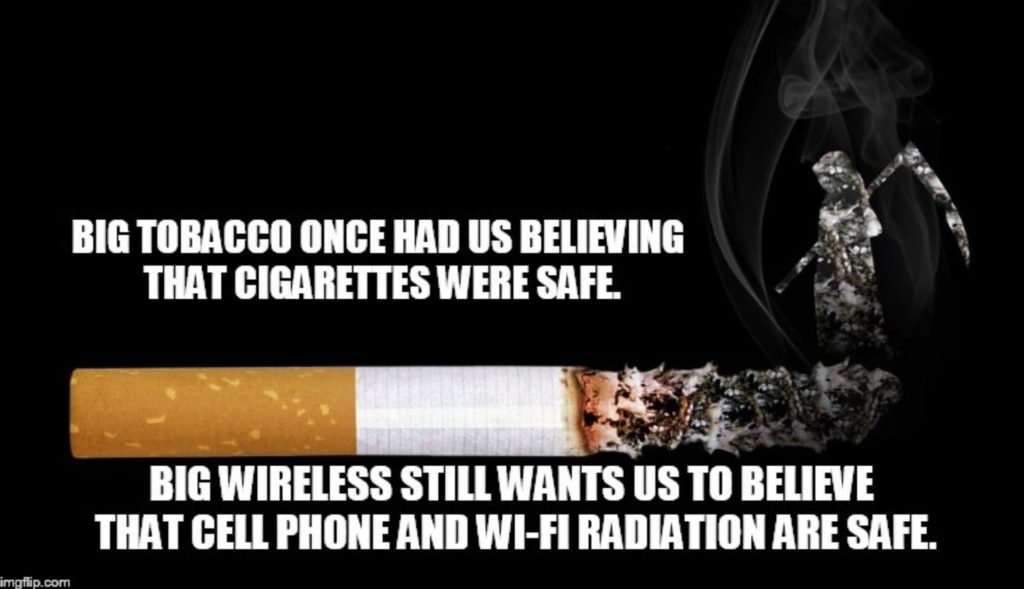
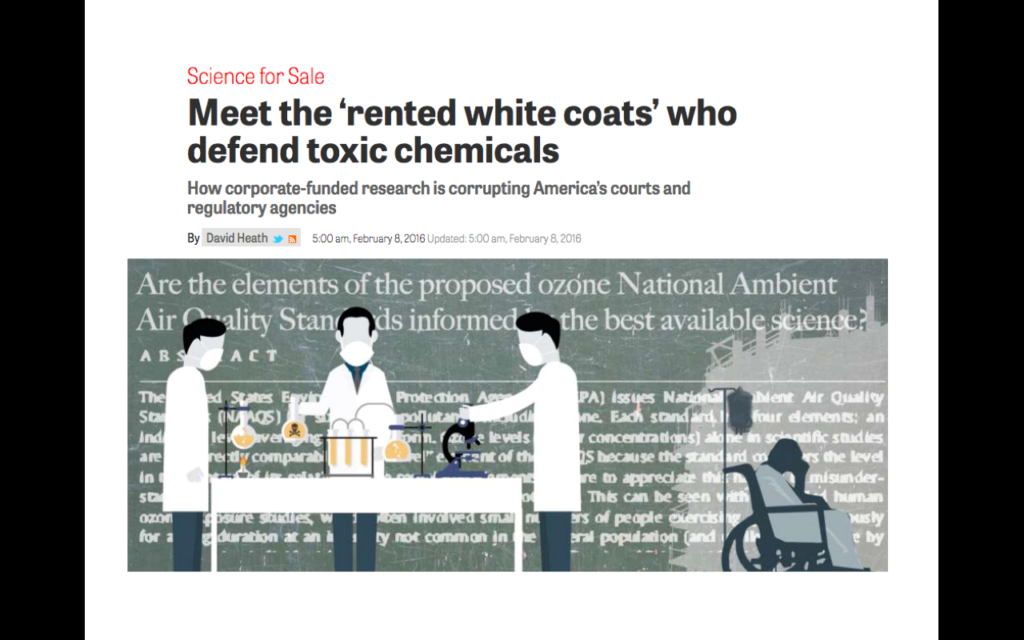
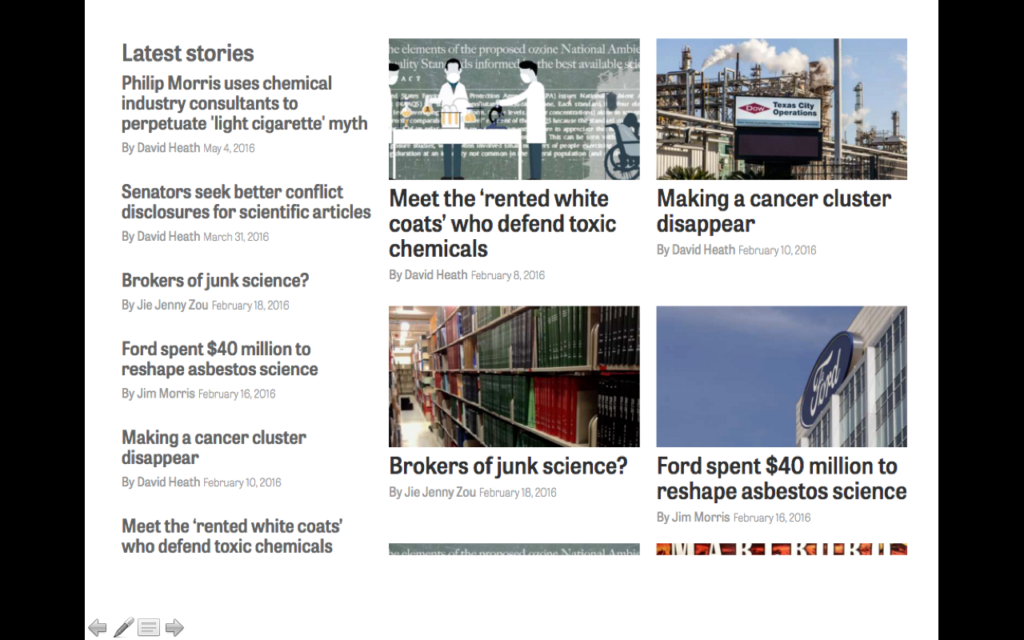
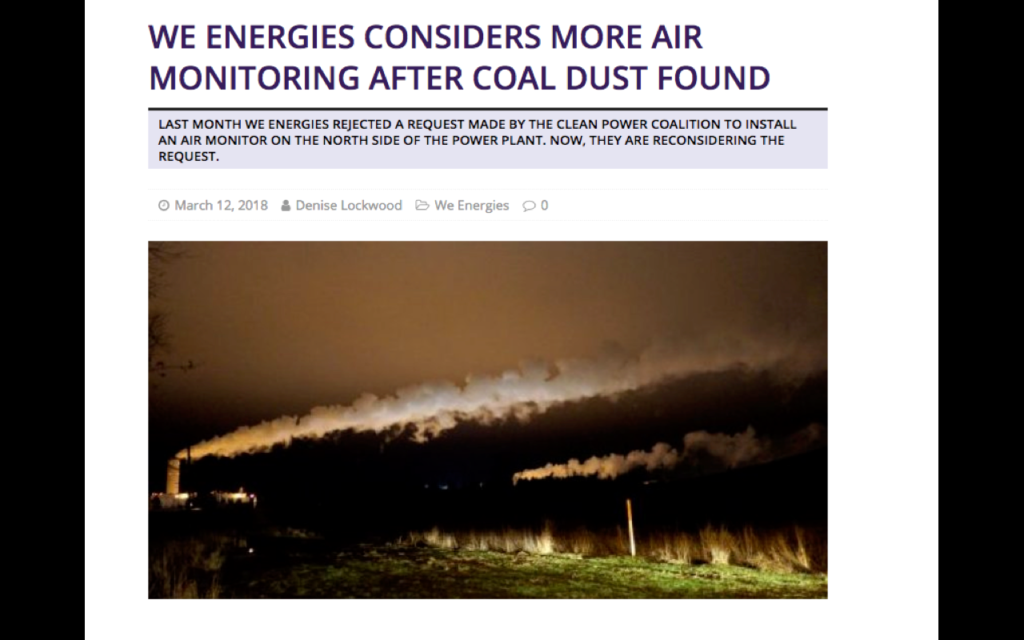
Be the first to comment on "Woodchucks, Cigarettes, Asbestos, and Wireless; What Are We Smoking?"